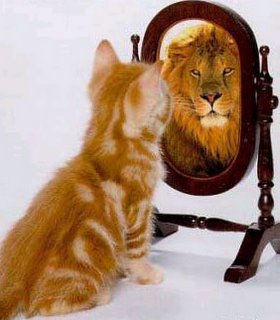
So how do we apply the leadership concepts of vision, role model and recognition that Robert Steven Kaplan outlined in his great book “What to Ask the Person in the Mirror”?
Matchbook Learning articulates its vision in 3 to 4 sentences, defines the 3 key priorities we need to achieve that vision and then applies that vision and those priorities in circumstances (i.e. bottom 5% school geographies) that enable us to realize our potential by acting on our collective strengths while avoiding our weaknesses.
Matchbook Learning Vision:
To bring the very best in blended school turnaround design to our nation’s very worst schools so we can positively disrupt the current trajectory of US K-12 public education system.
Matchbook Learning DNA:
We are aware that this vision will require us to be both courageous (tackling bottom 5% schools) and accountable (for student performance).
Matchbook Learning Key Priorities:
In order to achieve our vision, we must do 3 things incredibly well:
1. Partner: contract with State & Local School Districts that have the conditions necessary for us to successfully plan, launch and eventually scale.
2. Recruit: Find and develop the best talent for the worst performing schools.
3. Coach: Build the capacity of every teacher to be effective in our blended model by observing, prototyping, iterating, consulting and proving out what works.
Recognition: Self-Awareness & Self-Management
I mentioned in the previous blog that a leader must be both highly self-aware and self-managed to be effective. These two attributes according to Kaplan are the most important to a leader.
I know that the circumstances where I am most effective are ones that involve persuasion and problem solving. Circumstances where I am weakest and my behavior most regrettable are when there is a lack of urgency, responsiveness or autonomy. I tend to overweight solutions that are fast over slow, and aggressive versus passive. Not every circumstance is applicable to these preferred modes of operating. At Matchbook Learning we are building a team that is similarly wired and so we must navigate the conditions that leverage our strengths and minimize our weaknesses individually and collectively.
Can you articulate your organization’s vision in one sentence? Can the rest of your organization?
What are the 3 most important priorities you must achieve for your vision to be achieved?
What are your 3 greatest strengths? Weaknesses? What circumstances enable your leadership to be highly effective? What circumstances enable others to be highly effective under you? What circumstances cause stress and in turn regrettable behavior by you? What two to three key messages do you send with your behavior?
We all prefer to look in the mirror after we’ve had a lengthy and arduous workout as opposed to when we’ve maxed out on our Dunkin Donuts gift card. We are biased in our view of our own leadership ability, assuming that we constantly project an image and competence that is always positive and inspiring. The key to insight, particularly personal insight I have found lies in the ability to ask the right questions. The right questions can unlock thinking that can lead to new insights about the person you are most familiar with. Close friends and colleagues can also help to shine an alternate light or even a new mirror against your favorite one.


